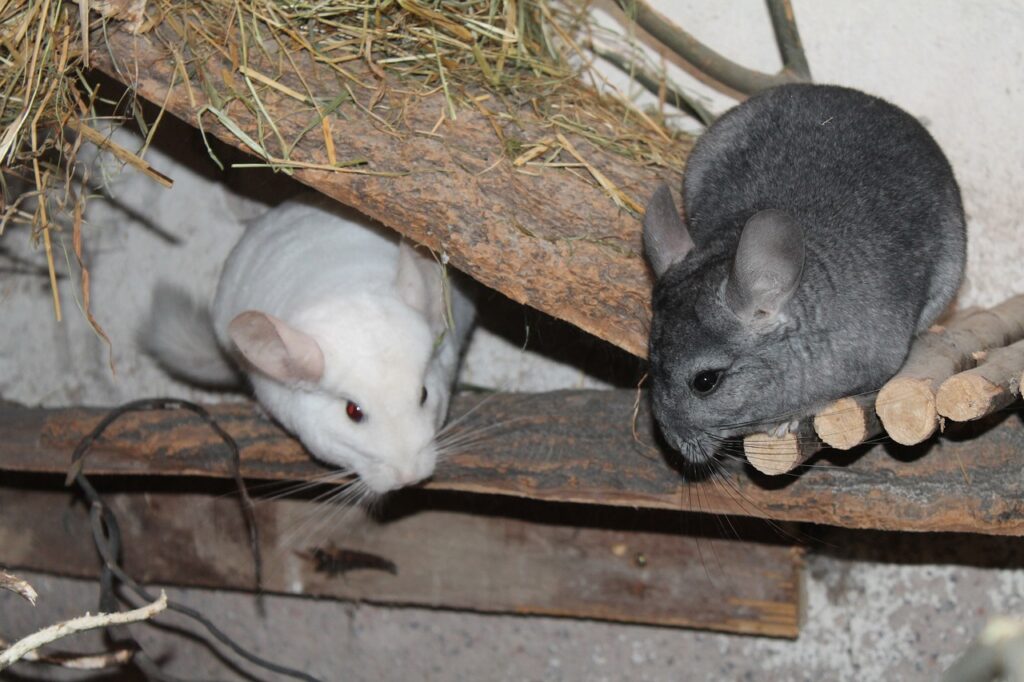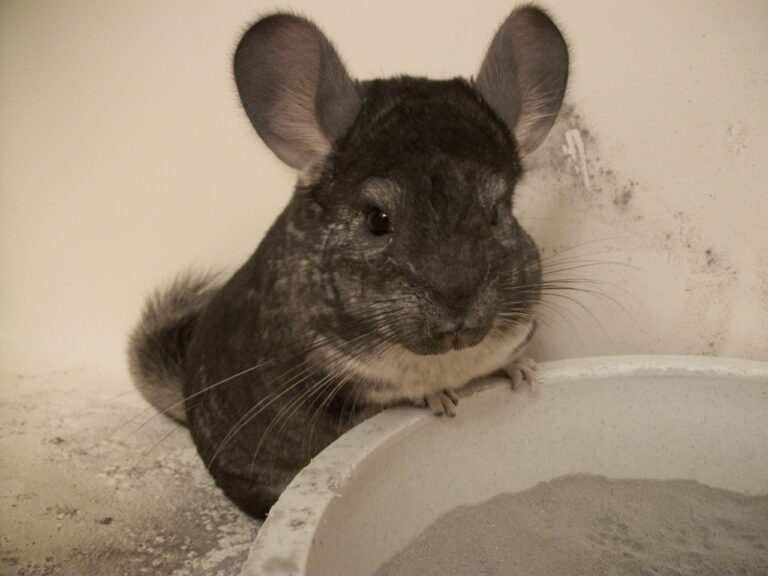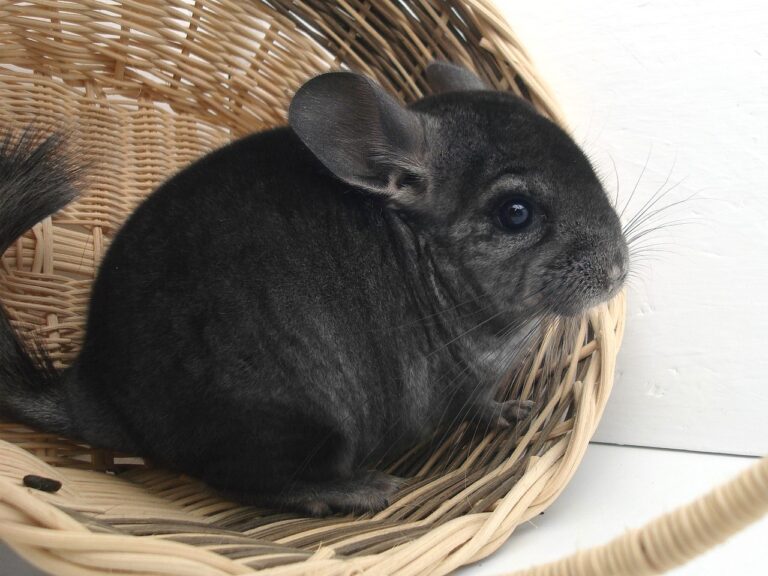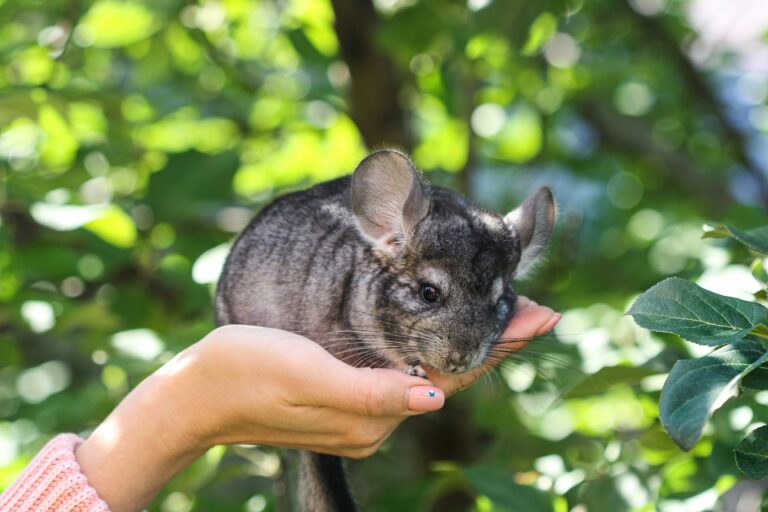A Guide to Breeding Chinchillas

Breeding chinchillas requires careful planning, dedication, and knowledge of chinchilla biology and behavior!
In this article, we’ll delve into the intricacies of chinchilla breeding, covering everything from selecting breeding pairs and preparing for mating to caring for pregnant chinchillas and raising healthy kits.
Whether you’re a seasoned breeder or considering raising your first litter, this guide will provide you with the essential information you need to embark on this journey responsibly and ethically.
Considerations Before Breeding Chinchillas
Before you cross your fingers and hope for chinchilla babies, there are a few things to think about!
Select Quality Chinchilla Parents
Physical Qualities: When breeding any animals, you want to raise healthy individuals that conform to whatever standard is available. This basically just means that you want to raise the best chinchillas possible!
Chinchilla shows aren’t as prevalent in the US as rabbit shows, but there are still some national clubs that provide valuable information about what qualities the ideal chinchilla has. One such organization in the US is the Mutation Chinchilla Breeders Association, and in the UK there is the National Chinchilla Society.
Unrelated Parents: Avoid breeding related chinchillas! Inbreeding accentuates characteristics. This means that if you have a chinchilla that has poor qualities or your chinchillas have a relative that has poor qualities, inbreeding can make it much worse.
Most importantly, though, inbreeding can result in the occurrence of genetic defects and inherited diseases.
Age: Female chinchillas can sexually mature as young as 4-5 months old, but it is unhealthy and potentially dangerous to breed this young. You should wait until your female chinchilla is at least 10-12 months old and weighs at least 650 grams before breeding for the first time. Ideally, your female chinchilla will also have had her first litter before she is 2 years old.
Like female chinchillas, male chinchillas can sexually mature as young as 4-5 months, but it is recommended to wait to breed until they are 8 months old.
Health: Arguably the most important consideration is the health of the prospective chinchilla parents! Only breed happy, healthy animals. Breeding sick individuals can worsen their health. Breeding animals with genetic disorders will also possibly condemn future generations to the same issues.
The Mating Process
Introductions: Introduce the male and female chinchillas gradually, allowing them to become familiar with each other’s scent and presence. This can be done by placing their cages or enclosures beside each other, about 4 inches apart, allowing your chinchillas to get to know each other for up to a week without risking injury. If neither of them shows hostility to the other, you can begin letting them both out together during play time. Carefully observe them, and if all goes well over the next few days, you can attempt to begin housing them together.
Mating: You may need to leave your male and female together for an extended period of time to ensure successful mating. The positive of this is your chinchillas can begin bonding but the negative is you don’t know when exactly you are expecting babies. You want to remove the female before she gives birth to prevent the possibility of the female breeding again too soon. Even if you intend to breed your female chinchilla again, she will need some recovery time to keep her in top health!
Pregnancy and Birth
Gestation Period: Chinchillas have a relatively long gestation period of approximately 111 days, or around three and a half months. Keep a close watch on potentially pregnant chinchillas for signs of pregnancy, such as weight gain, nesting behavior, and changes in appetite and activity!
Nesting Preparation: Provide pregnant chinchillas with a quiet, cozy nesting area stocked with suitable nesting materials like hay or shredded paper. Ensure the nesting area is clean, comfortable, and free from drafts to create an optimal birthing environment. You should also remove the dust bath and wait to give it back for 10-14 days.
Birth Process: Chinchillas typically give birth to litters of one to six kits, although larger litters are possible. Labor and delivery are usually swift, with kits being born within a short timeframe. Female chinchillas are usually adept at caring for their young, providing warmth, grooming, and nursing them. Keep an eye on the kits though, and consult your veterinarian if you have any concerns about the kits or the mother.
Care of Mother and Kits
Postnatal Care: After birth, monitor both the mother and her kits closely. Provide the mother with a nutritious diet, fresh water, and a calm environment to minimize stress. Offer additional nesting material if necessary and handle the kits gently to avoid upsetting the mother.
Weaning Process: Chinchilla kits begin to explore solid food and gradually wean from their mother’s milk at around six to eight weeks of age. Provide a balanced diet to support the growing kits’ nutritional needs!
Socialization and Handling: Handle the kits regularly from a young age to promote socialization and tame behavior. Avoid separating kits from their mother too early, as they benefit from her care and guidance during the early stages of development.
Conclusion
Breeding chinchillas is a rewarding yet demanding endeavor that requires dedication, knowledge, and a genuine commitment to the welfare of the animals involved.
By understanding the intricacies of chinchilla breeding, adhering to responsible breeding practices, and providing appropriate care and support to parent chinchillas and their offspring, breeders can contribute to the health and vitality of chinchilla populations while enjoying the joys of nurturing these unique creatures!
Whether you’re a novice breeder or a seasoned enthusiast, the journey of raising chinchillas is filled with learning opportunities, joys, and the fulfillment of nurturing these adorable furballs!






